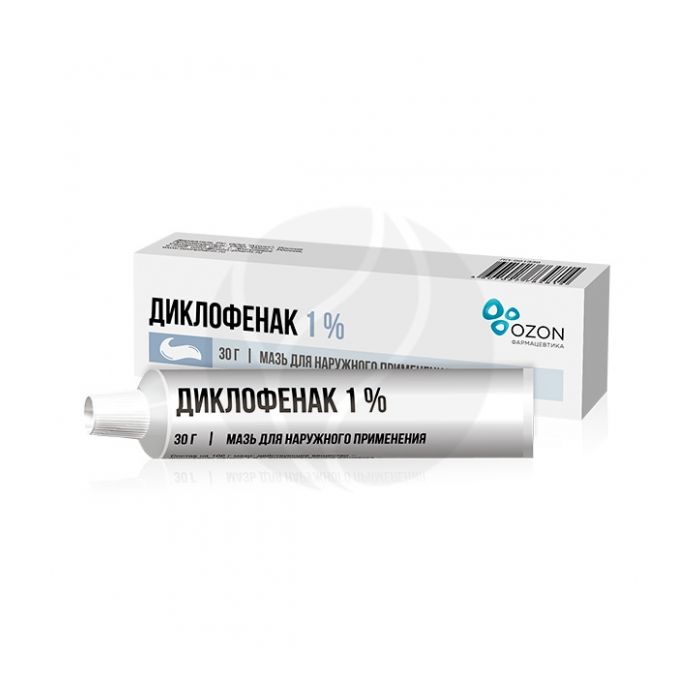Diclofenac ointment 1%, 30 g
Expiration Date: 11/2025
Russian Pharmacy name:
Диклoфенак мазь 1%, 30 г
- inflammatory and degenerative diseases of the joints (osteochondrosis, osteoarthritis, periarthropathy);
- rheumatism of soft tissues;
- traumatic bruises;
- sprains of ligaments, muscles and tendons;
- inflammatory edema of soft tissues;
- arthralgia and myalgia caused by heavy physical exertion.
At a dose of 2-4 g, apply a thin layer on the skin over the inflammation and rub in lightly, the frequency of use is 2-3 times a day.
The maximum daily dose should not exceed 8 g.
The course of treatment is no more than 14 days. The need for a longer use of the drug is determined by the doctor.
active substance:
diclofenac
- pathological changes in the blood picture of unknown origin;
- peptic ulcer of the stomach and duodenum;
- destructive-inflammatory bowel disease in the acute phase;
- pregnancy;
- lactation period (breastfeeding should be abandoned);
- children and adolescents up to 12 years old (intramuscular injection, supp.);
- children under 6 years of age (tablets, ointment);
- hypersensitivity to acetylsalicylic acid or other NSAIDs (including the 'aspirin triad');
- hypersensitivity to diclofenac and other components of the drug
Pharmacological action
Diclofenac is a non-steroidal anti-inflammatory drug (NSAID). It has anti-inflammatory, analgesic and antipyretic effects. Inhibits the COX enzyme in the cascade of arachidonic acid metabolism and disrupts the biosynthesis of prostaglandins.
When applied externally, it has anti-inflammatory and analgesic effects. Reduces and relieves pain at the site of application of the ointment (including joint pain at rest and during movement), reduces morning stiffness and swelling of the joints. Promotes increased range of motion.
Indications
- inflammatory and degenerative diseases of the joints (osteochondrosis, osteoarthritis, periarthropathy);
- rheumatism of soft tissues;
- traumatic bruises;
- sprains of ligaments, muscles and tendons;
- inflammatory edema of soft tissues;
- arthralgia and myalgia caused by heavy physical exertion.
Contraindications
- pathological changes in the blood picture of unknown origin;
- peptic ulcer of the stomach and duodenum;
- destructive-inflammatory bowel disease in the acute phase;
- pregnancy;
- lactation period (breastfeeding should be abandoned);
- children and adolescents up to 12 years old (intramuscular injection, supp.);
- children under 6 years of age (tablets, ointment);
- hypersensitivity to acetylsalicylic acid or other NSAIDs (including the 'aspirin triad');
- increased sensitivity to diclofenac and other ingredients
Dosing and Administration
At a dose of 2-4 g, apply a thin layer on the skin over the inflammation and rub in lightly, the frequency of use is 2-3 times a day.
The maximum daily dose should not exceed 8 g.
The course of treatment is no more than 14 days. The need for a longer use of the drug is determined by the doctor.
Side effects
At the site of application of the ointment, skin rash, burning, redness are possible. With prolonged external use of the drug, it is possible to develop systemic side effects from the digestive system, central nervous system, respiratory system, as well as allergic reactions.

